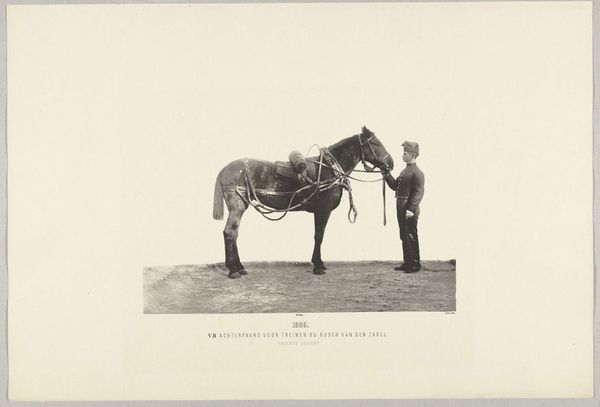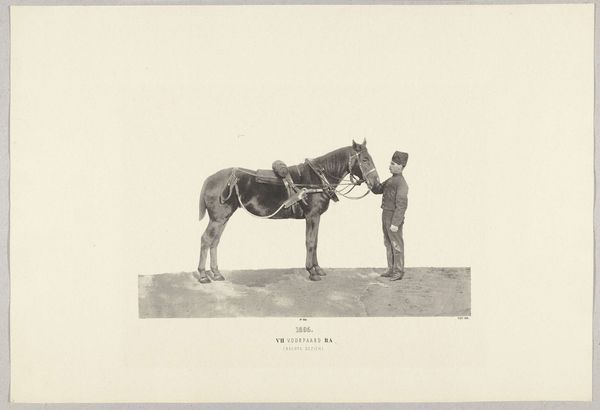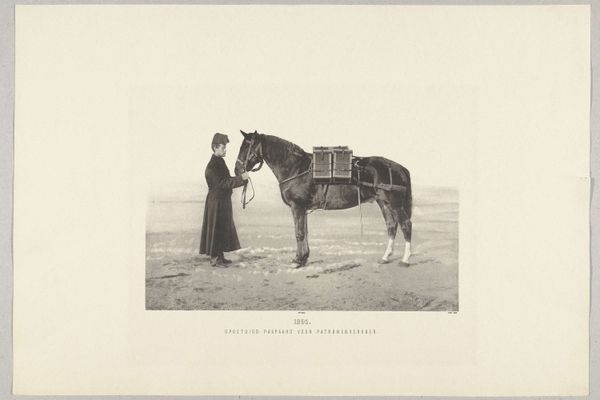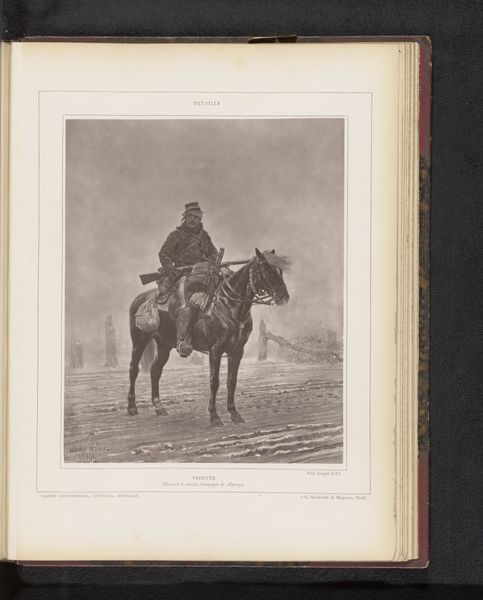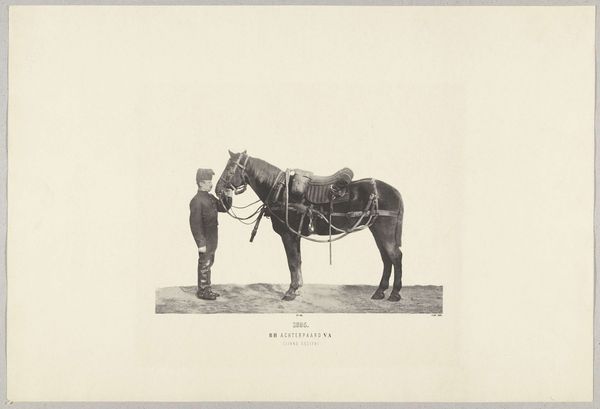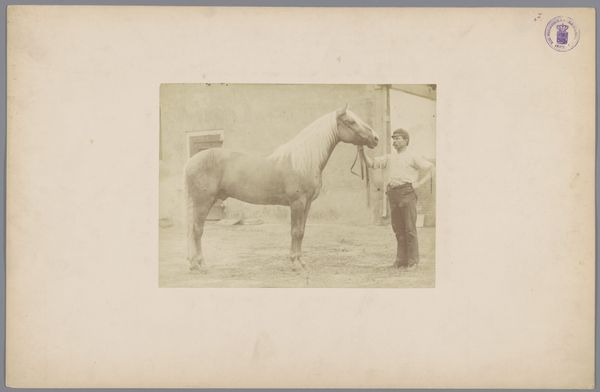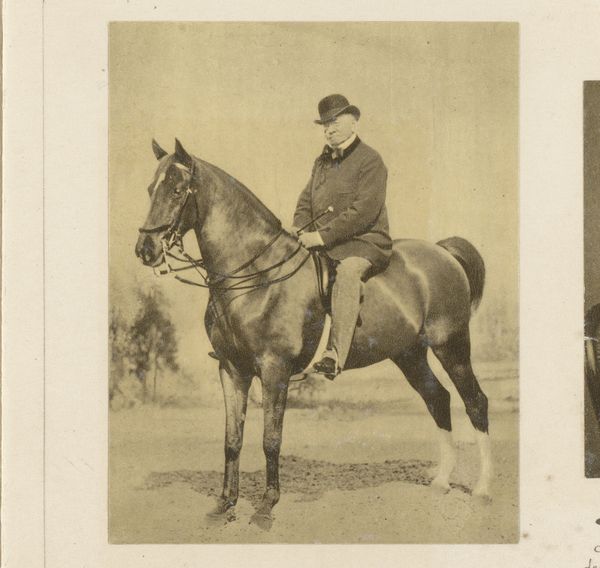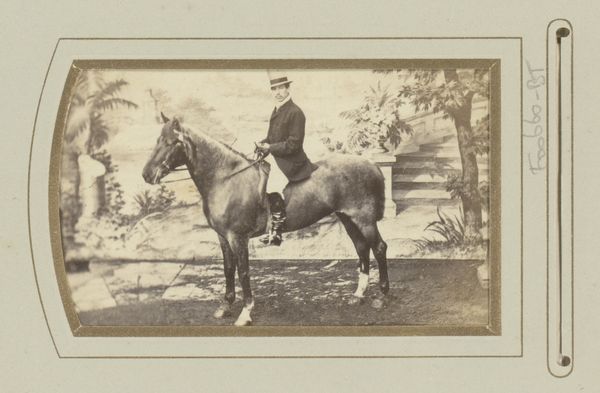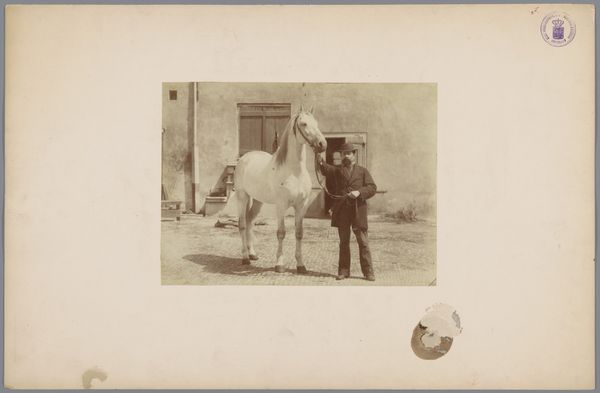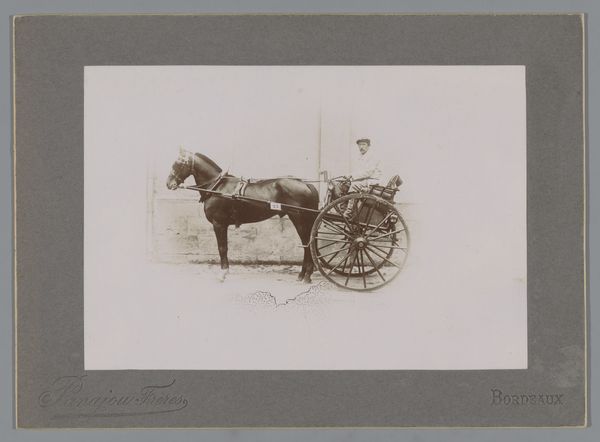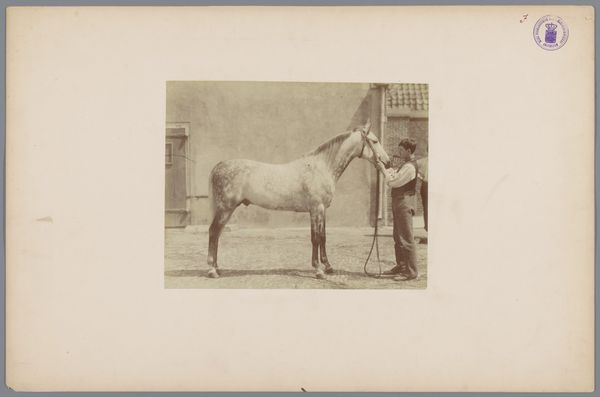
photography, gelatin-silver-print
#
portrait
#
animal
#
photography
#
horse
#
gelatin-silver-print
#
realism
Dimensions: height 183 mm, width 265 mm, height 331 mm, width 486 mm
Copyright: Rijks Museum: Open Domain
Editor: This gelatin-silver print from 1895, titled "Opgezadeld legerpaard, en profil gezien", depicts a saddled army horse, and its photographic style gives it an austere feel. I’m curious about the ways we can look at it through a materialist lens. How can we interpret it through its production and context? Curator: The choice of gelatin-silver print as a medium is crucial. Think about its rise in popularity at this time: photography was becoming more accessible and was often used for documentation purposes. This piece likely served a specific function within the military, perhaps as a record of equipment or training. We see a clear relationship between artistic technique and practical application, which underscores that the means of art production shape the way subjects are displayed and received. Editor: So, you're saying that the material—the gelatin-silver print—isn't just a passive vehicle, but actively contributes to the photograph's meaning by grounding it in a specific technological and historical context. But what about the subject matter? Does that offer more insights? Curator: Absolutely. Consider the saddled horse itself. The production of military equipment, the labor involved in training both horse and rider, and the infrastructure required to maintain them – all this points to the material realities of power. This isn’t just an image of a horse; it is an image deeply embedded in the materiality of the military industrial complex of the late 19th century. Editor: That shifts my perspective quite a bit. It’s no longer just a portrait, but evidence of the physical labor, industrial resources, and systems of control at play in military operations. Curator: Precisely. By analyzing the materiality and means of production, we can begin to decode the complex network of social relations embedded within this seemingly simple image. Editor: This conversation has definitely broadened my view, making me see it not only as a photograph but also as an artefact of military industrial practices. Thanks for making me think.
Comments
No comments
Be the first to comment and join the conversation on the ultimate creative platform.
